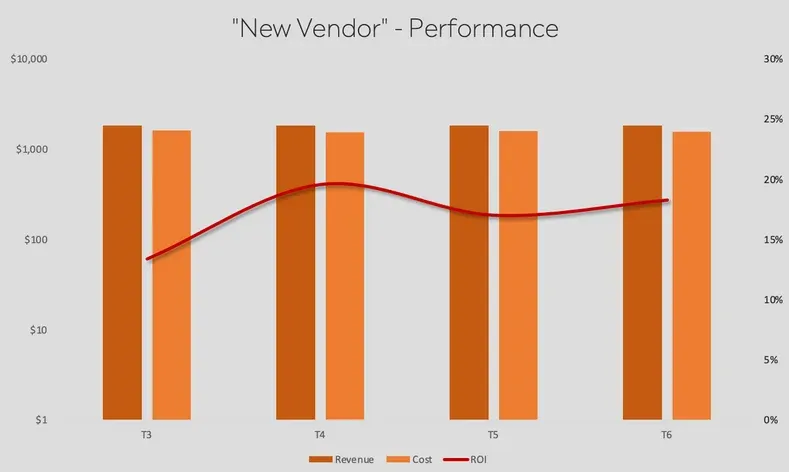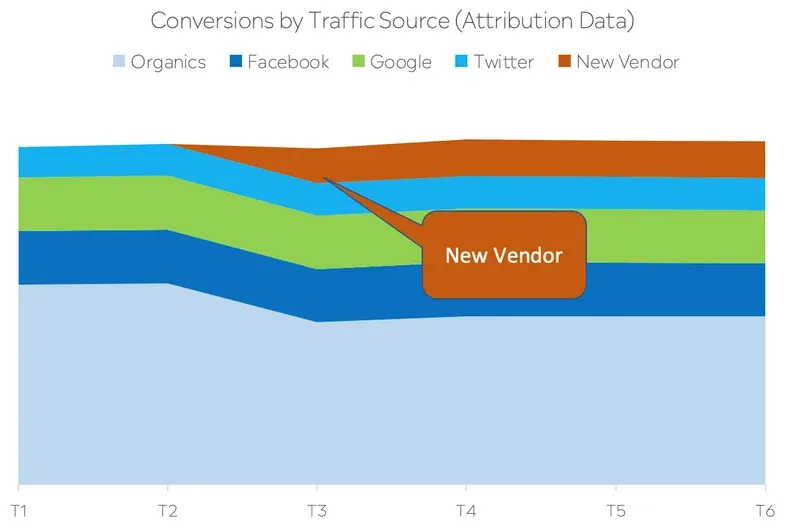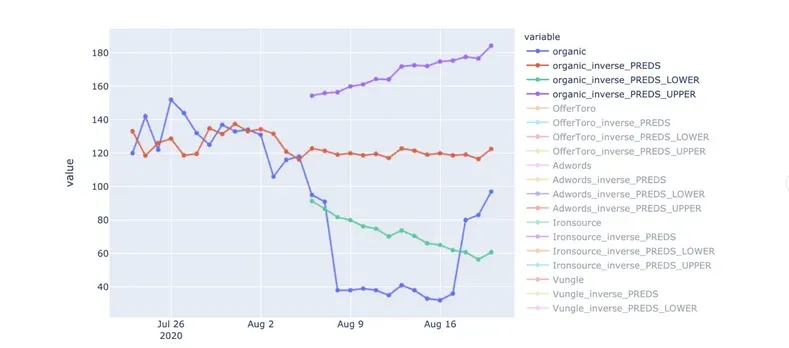Platform
Use Cases
Many Possibilities. One Platform.
AI and Automation
The Always-on Incrementality Platform
Solutions
Teams
Built for your whole team.
Industries
Trusted by all verticals.
Mediums
Measure any type of ad spend
Use Cases
Many Possibilities. One Platform.
AI and Automation
The Always-on Incrementality Platform
Teams
Built for your whole team.
Industries
Trusted by all verticals.
Mediums
Measure any type of ad spend

This article provides a quick guide to interpreting incremental return on investment (ROAS):
Return Over Ad Spend (ROAS) is one of the key metrics monitors by marketers everywhere.
The logic is simple: If the revenue gains are higher than the ad spend used to acquire customers - the investment was beneficial.
Most would assume that positive ROAS means incremental ROI.
But ROAS does not mean incremental ROI. Especially when relying on traditional attribution methods.
The Formula is Correct. The Math is Broken.
ROI is the initials for Return Over Investment. Advertising spend being the "Investment" asset, while the revenues generated as a result of Advertising represents the return. Incremental ROAS vs. ROI may often show a different picture.
It is common to credit only the direct sales attributed to advertising, however, Advertising could be generating an impact over sales results, even if those are not attributed.
Example of incremental ROI is a campaign where users are exposed to. While only a small percent of users will click the ads and convert, it is just as likely that users will convert without having clicked the ad as seeing the advertising again and again creates a feeling of trust in the brand. This effect is part of the incremental revenue that is often overlooked.
While calculating ROAS means summing up the revenues from paid media attributed results and dividing those with the media costs, Calculating Incremental ROI is very simple:
Total Revenues (across all channels) / Total Media Costs = ROI
Understanding what is incremental revenue is crucial here—it refers to the additional revenue generated by marketing efforts beyond what would have occurred organically.
The graph and table below show the reported ad spend and revenues from new customers attributed to “new vendor”.
Based on last touch attribution data - this new vendor generates a nice return on investment.


When zooming out to see overall results, the user acquisition graph looks as follows:

Any marketing data analyst would see that this would mean that while the new vendor’s ROAS looks positive - the total ROI decreased.
Return Over Ad Spend ignores total ROI, leading marketers to waste and non incremental results. Uber and AirBNB found that over 80%(!) of their performance advertising spend was redundant. And this is just the tip of the iceberg.
How to calculate incremental revenue becomes essential in this context, as traditional metrics can be misleading without it.
Incremental return over investment takes a more holistic approach to measurement, always monitoring the results across the board, while taking into account the results as reported by last-touch attribution and media cost data.
This approach looks at the conversion changes caused by paid marketing, to come up with an understanding of the real incremental revenue and incremental ROI.
Measuring incrementality requires a continuous layer of prediction analytics overlaid above every comparable combination. Creating a synthetic cohort allows our platform to monitor the difference in difference and come up with digestible insights to marketers.
E.g. “The ROAS for ‘New Vendor’ is cannibalizing Organic traffic. Stopping the activity with ‘New Vendor’ will lead to positive incrementality”

INCRMNTAL is an incrementality measurement platform providing Advertisers with incrementality and cannibalization insights over their campaigns, ad networks and any marketing activity. The platform calculates incremental ROI and cost for incremental conversion.
If you're focused on mastering planned marketing budgets, incrementality testing is one of the most powerful tools to ensure your investments are actually driving growth.
If you want to learn more, visit INCRMNTAL or book a demo today!

Maor is the CEO & Co-Founder at INCRMNTAL. With over 20 years of experience in the adtech and marketing technology space, Maor is well known as a thought leader in the areas of marketing measurement. Previously acting as Managing Director International at inneractive (acquired by Fyber), and as CEO at Applift (acquired by MGI/Verve Group)